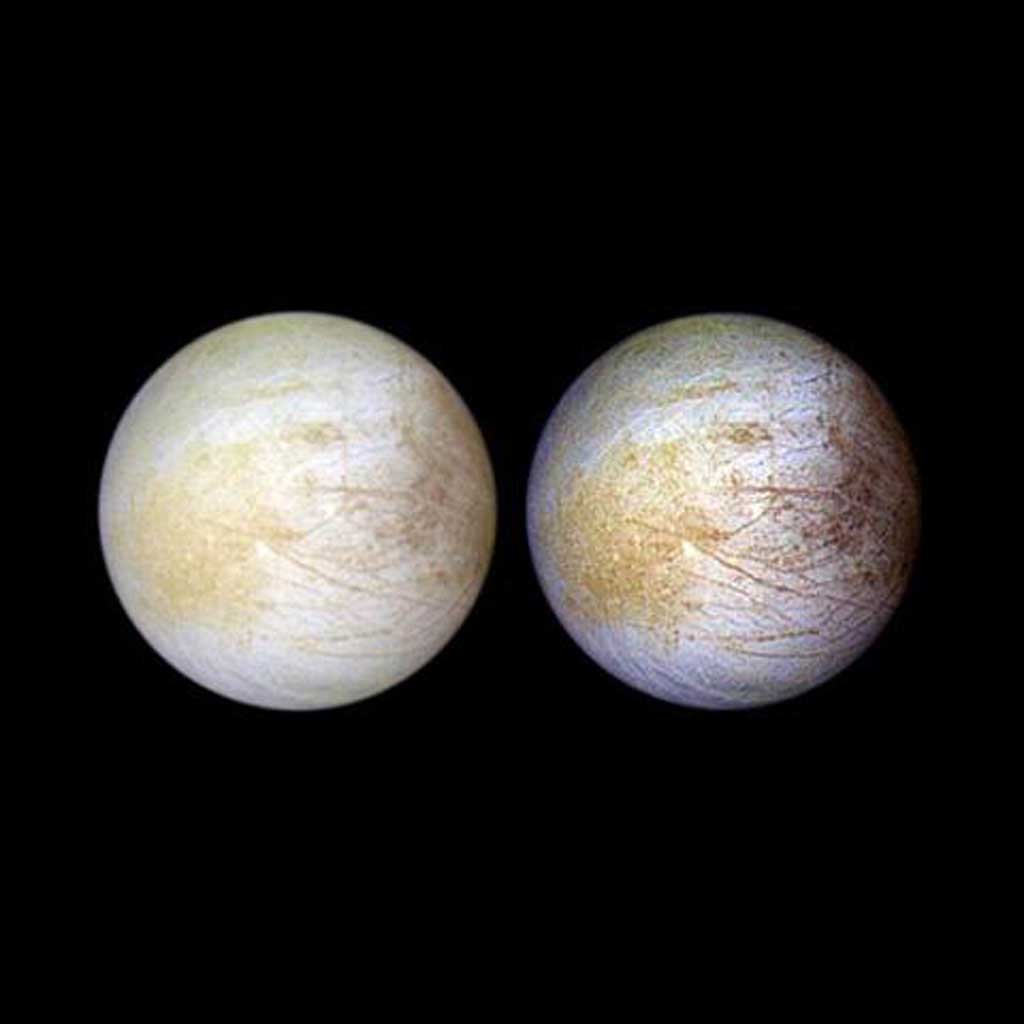Hidden beneath an icy crust, most of what researchers know about that ocean is based on the moon’s smooth, streaked surface. Europa lacks mountains or large craters, but it is crisscrossed with ridges and cracks, called chaos terrain, that scientists think is caused by the shifting of ice plates over a liquid ocean, analogous to Earth’s plate tectonics.
By using the Hubble Space Telescope to spy on Europa’s surface, astronomers have discovered the presence of sodium chloride – better known as table salt, the same compound that makes Earth’s oceans so salty. This might indicate that Europa’s ocean is more like Earth’s or Enceladus’ oceans than previously thought, and bolsters some theories about hydrothermal activity on the moon.
Salty Results
The only spacecraft to visit Jupiter’s moons up close was Galileo, back in the late ‘90s and early 2000s. So for an updated view, Samantha Trumbo and colleagues from the California Institute of Technology used Hubble to scan Europa in visible light. This revealed the electromagnetic fingerprints of various elements, also called spectral signatures. One of these fingerprints belonged to sodium chloride, and it appeared most often near the scars of the moon’s chaos terrain. It’s an indication that the salt might be seeping through from an underwater ocean, the researchers say in a paper published Wednesday in Science Advances.
The chaos terrain is younger than the rest of Europa’s surface, and scientists think it’s caused by interactions with the liquid or slush layers farther down, though the specifics are still a matter of debate. So if salt is appearing near these features, it likely comes from farther below.
Astronomers have long thought that Europa’s ocean was salty, but that the salts were based on sulfates instead of chlorides (chemists have a different and broader definition of salt than your average chef). Sulfates are common in Europa’s realm of the solar system, and the ocean could grow salty with sulfates just from water interacting with the seafloor over the years.
Earth and Saturn’s moon Enceladus both have oceans containing chloride salts, and also have either known or strongly suspected hydrothermal vents in their seafloors. That heating and resulting circulation is key to how the waters become chloride-rich over time. So if Europa shares the chloride-salt ocean, it could also share the heat source making the salty ocean.
And even if Europa doesn’t host deep-sea hot vents, the presence of the chloride salt dramatically changes astronomers’ assumptions of the unseen ocean’s chemistry.
Despite the frozen nature of moons like Enceladus and Europa, scientists see them as a good bet for extraterrestrial life in the solar system. The gravitational tug of war between the moons and their giant planets can keep an underground ocean liquid, and possibly even drive thermal vents like those that give rise to life in Earth’s deepest, darkest oceans. But just because life could exist there doesn’t mean it does, and scientists have limited data to investigate.
That lack of data makes scientists’ theories provisional for the moment. Despite decades of research, scientists still don’t know for sure how Europa’s chaos terrain formed. And there may be other ways to make a salty chloride ocean without thermal vents. But upcoming missions like NASA’s Europa Clipper and ESA’s JUICE (Jupiter Icy moons Explorer) may finally reveal what’s going on under Europa’s icy surface, and whether that ocean harbors the potential for alien sea life.
Editor’s note: An earlier version of this article contained errors. The Hubble observations were visible light, and the salts previously suspected on Europa were sulfates. The chloride is a result of hydrothermal circulation.










